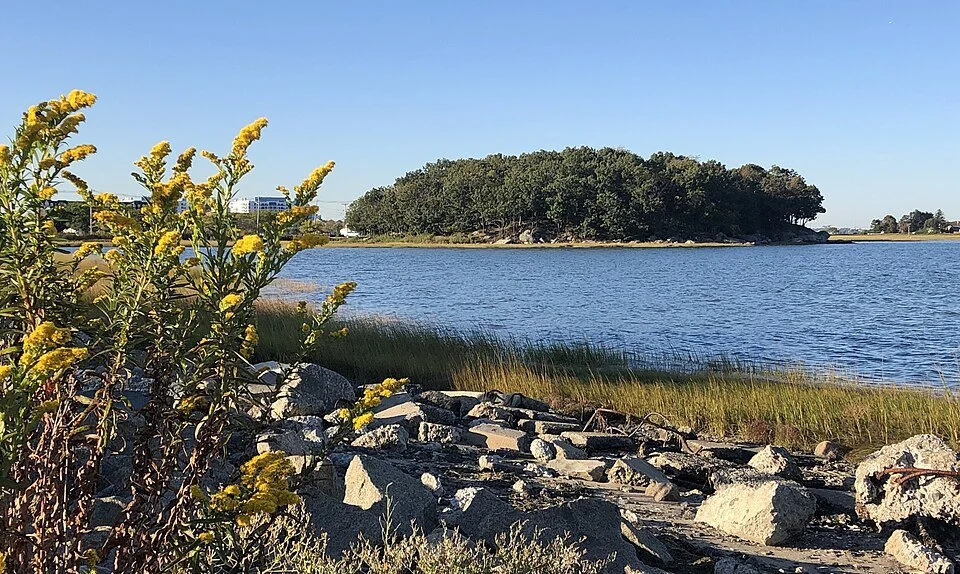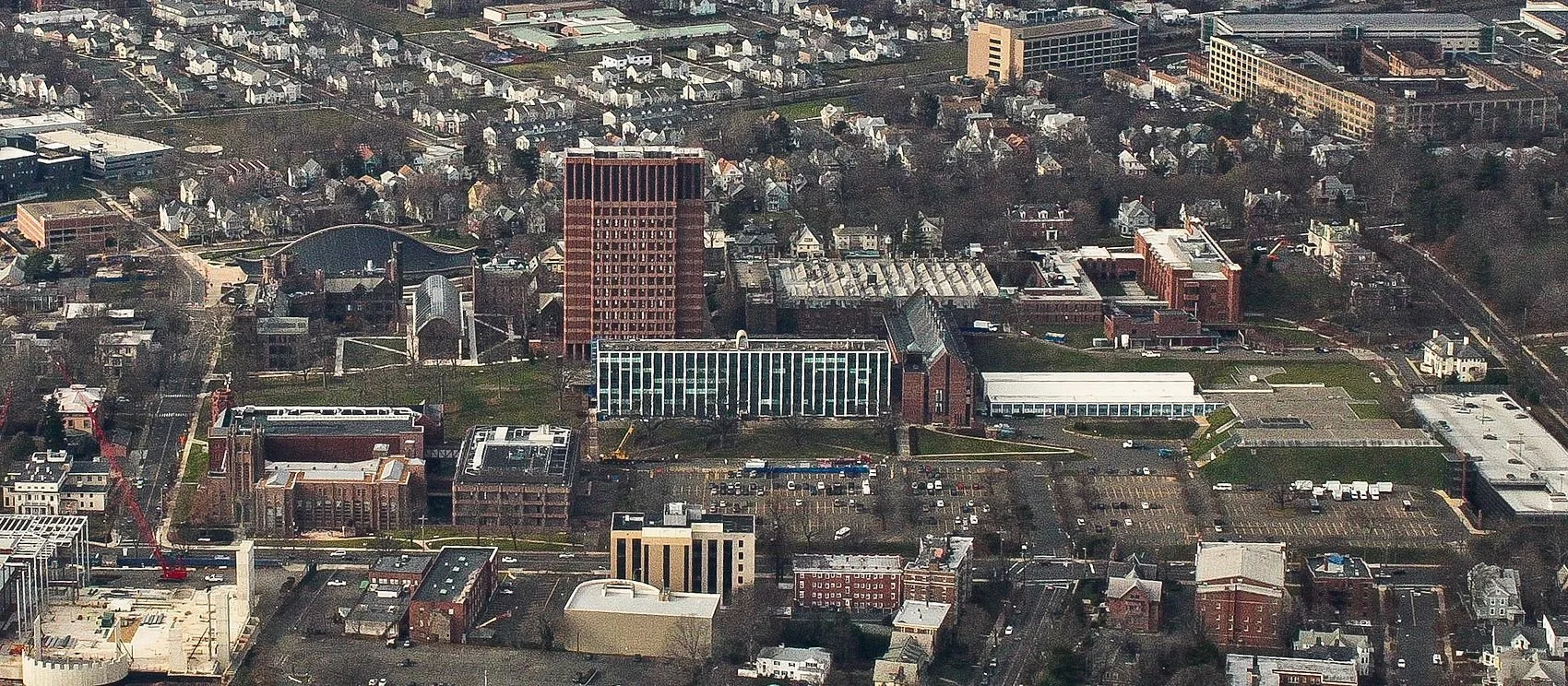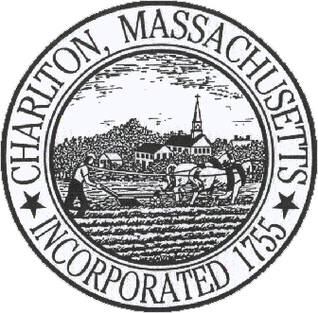
A visionary Gilded Age artist
Above, “Fantasy Landscape (Study for the Whitney Studio Mural,” circa 1911 (0il on canvas), by Howard Gardiner Cushing (1869-1916), in the show “Howard Gardiner Cushing: A Harmony of Line and Color,’’ at the Newport Art Museum, through Dec. 31
— From Private Collection
Below, installation view
— Photos by Sandy Nesbitt
The museum says:
“Curated by Ricardo Mercado and organized in Collaboration with Newport Curates, the show is a landmark exhibition celebrating the life and work of Howard Gardiner Cushing, a dynamic force in American art at the turn of the 20th Century. The exhibition is the first major retrospective in decades of one of the Gilded Age’s most visionary — and overlooked artists.’’
Whither the status of the historic Boston Fish Pier?
(New England Diary’s editor, Robert Whitcomb, is chairman of The Boston Guardian’s board but doesn’t write for the paper.)
A revived petition to grant landmark status to the Boston Fish Pier, at 212-234 Northern Avenue, is sparking debate among city officials, preservationists and business stakeholders.
As part of an effort by the Mayor Michelle Wu’s Office of Historic Preservation to move through a backlog of community- filed petitions that span several decades, a 1995 petition to grant city landmark status to the Massachusetts Port Authority-owned Fish Pier has resurfaced.
“The Fish is Pier is also an architectural treasure,” reads the 1995 petition, “a colorful marriage of Georgian simplicity and proportions and solid Romanesque archways and materials. Above the arches are scrolls and likenesses of Neptune, God of the sea. The smaller of the three buildings has decorated concrete pediments with bas relief sculpture of sea motifs.”
The age of the petition and the pier’s existing status as a state-owned property that is already on the National Register of Historic Places has raised some questions about whether another designation is necessary, and how it could affect the area’s growing businesses.
The Seaport’s city councilor, Ed Flynn, is voicing his opposition both to the potential designation and to how the process has unfolded so far.
“I don't think it’s necessary, Flynn said in an interview. “This is a Massport-owned property. It’s a state asset. It’s under regulations and guidelines established over many years by Massport and the process is working well. We don’t need to add another level of bureaucracy from the city government.”
A listing in the National Register of Historic Places puts no restrictions on what a non-federal owner may do with their property, unless the property is involved in a project that receives public funds.
Because the Fish Pier is owned by the Massport, structural changes made by the state already must go through a process dictated by the Massachusetts State Historic Preservation Office. If added to the city landmarks registry, an additional approval process, as determined by a hearing of the Boston Landmarks Commission (BLC), may need to be met.
“The project is expected to appear on the (BLC) agenda this month without any community process or notifications to neighbors or businesses,” Flynn said. “That’s a problem.”
Under the city’s landmarking procedure, once a petition is accepted, a study report is prepared to assess the historical and architectural significance of the property. The report is posted for a 21-day public comment period before a hearing is held. The BLC said in a statement given over email that the study report has been drafted but is not yet publicly available.
If the BLC votes to approve the designation, the decision then moves to the mayor, who has 15 days to respond. If the mayor signs off, or takes no action, the petition proceeds to the City Council for a final vote within 30 days. In January, Boston City Hall was granted landmark status by default, when the City Council failed to hold a vote within that 30-day period following Mayor Wu’s approval.
Flynn contends that city oversight could interfere with the daily operations of businesses that rely on flexibility to maintain facilities and infrastructure. He added that both governors and mayors have long recognized the pier’s economic value and left it largely untouched by broader redevelopment efforts.
“If one of the seafood companies needs to do some work on their building, what impact would a landmark designation have?” Flynn asked. “Those issues are unclear right now, and that’s exactly why a hearing is needed before we move forward.”
Summer was sensual
Hummock on the coast of Quincy, Mass., the town where Henry Adams grew up. Back then, much of it was semi-rural.
“Winter and summer, then, were two hostile lives, and bred two separate natures. Winter was always the effort to live; summer was tropical license. Whether the children rolled in the grass, or waded in the brook, or swam in the salt ocean, or sailed in the bay, or fished for smelts in the creeks, or netted minnows in the salt-marshes, or took to the pine-woods and the granite quarries, or chased musk-rats and hunted snapping turtles in the swamps, or mushrooms or nuts on the autumn hills, summer and country were always sensual living, while winter was always compulsory learning. Summer was the multiplicity of nature; winter was school.”
— From The Education of Henry Adams, by Henry Adams (1838-1918), famed writer, most notably as an historian. His paternal grandfather was President John Quincy Adams,who was a son of Founding Father and second President John Adams.
Time to move your car again
“Spring on Beacon,” by Meghan Weeks, at Copley Society of Art, Boston.
Chris Powell: More government and so, of course, more lobbyists
1891 cartoon of a legislator besieged by lobbyists.
MANCHESTER, Conn.
Lobbyists in Connecticut have a bad reputation, and it may get worse with the recent report from the Office of State Ethics that spending on lobbyists exceeded $28 million in the first quarter of this year and may reach a record high by the end of the year.
Why is there so much lobbying?
Mainly because there is so much government.
A telling clue is that that the organization spending the most on lobbyists in the first quarter was the Connecticut Hospital Association, at $1.45 million. Other big spending on lobbyists in the first quarter also involved medicine: the Partnership for America's Health Care Future, representing hospitals, medical insurers and drug manufacturers, at $349,000; Hartford HealthCare, at $248,266; the Connecticut Association of Health Plans, at $230,370; Elevance Health and Affiliates, with $214,940; and Yale New Haven Health System, at $214,447.
Again, this spending was just for the first quarter.
No businesses are more subject to government spending and regulation than hospitals, medical insurers, and drug manufacturers. Modern medicine is now largely a matter of price-fixing and cost-shifting by government, what with Medicare, Medicaid and legislative and regulatory mandates.
Even a small change in law, regulation, or government policy can have huge financial impact on the components of medical case, and, of course, huge impact on patients and policyholders.
Whether these laws, regulations and policies are good or bad, they are pervasive, and so all the entities affected need to watch the government around the clock and intervene urgently on behalf of their interests.
Legislators and governors are supposed to represent the public interest, but the lobbyists work at the state Capitol nearly every day while their constituents are just trying to make a living and to get home in time for dinner and some television. The programs they watch are not about public policy.
Many lobbyists are often well paid for subverting the public interest in favor of a special interest. So special interests sometimes provide disguises for their lobbyists.
That's why the Partnership for America's Health Care Future doesn't call itself what it really is -- the Partnership for the Prosperity of Hospitals, Medical Insurers and Drug Manufacturers -- and why the Connecticut Education Association doesn't call itself the Connecticut Teachers Union.
Even so, lobbyists are crucial for democracy and the legislative process, especially on the state level. For while the governor and legislative committees can draw on expertise from the Office of Legislative Research and state government agencies, lobbyists often have much relevant information that government doesn't have -- and not just information but insight about policies and how they are likely to be received not just by special interests but the public as well.
Thirty-seven years ago, in the aftermath of the Watergate scandal, the General Assembly and Gov. Ella T. Grasso seemed to think that lobbyists were the nexus of political corruption. So a law was enacted requiring lobbyists to register with the Office of State Ethics and wear special badges on the job. The implication was that lobbyists had the plague and legislators shouldn't want to be around them.
Caution was in order but it wasn't because lobbyists had the plague and weren't identifying themselves. It was because legislators had a sort of plague -- the desperate craving for campaign contributions -- and were easily tempted to seek them first from the special interests represented by the lobbyists. Tagged with badges, lobbyists became easier to shake down.
Indeed, years ago neophyte candidates for the legislature who sought advice about raising campaign money were urged to visit the Office of State Ethics, ask for a list of all the lobbyists, and start there.
Things are a bit better now. Campaign contributions from lobbyists are restricted, and the state has a program of public financing of campaigns that diminishes need for special-interest money.
But special-interest money still abounds in politics, and, as always, the best defenses against bad law and corruption are vigorous news organizations and an attentive public. They are much weaker these days.
Chris Powell has written about Connecticut government and politics for many years (CPowell@cox.net).
Gilded Age luminary
From Richard Morris Hunt’s sketchbook of a European trip, July to December 1874, (graphite and watercolor on paper), in the show “Richard Morris Hunt in a New Light,’’ at Newport Mansions.
The curator says:
“Hunt, the premier architect of the Gilded Age, is known for such imposing works as Marble House and The Breakers, in Newport, R.I. This exhibition will take a more intimate look at his life, creativity and ideas. For the first time, the exhibition will bring together Hunt’s personal sketchbooks, scrapbooks, architectural and interior drawings and family objects, drawn from the Library of Congress, Smithsonian National Portrait Gallery, Vermont Historical Society, Bennington (Vt.) Museum, the Preservation Society of Newport County’s collections and more.
Philip K. Howard: Code Red for red-tape America and what to do about it
Politics now has a dizzying quality. The roller-coaster of Trump policies―now we do this, now we do the opposite―is being matched by wild swings in the Democratic positions, led by socialist Zohran Mamdani's victory in the New York City mayoral primary. Just imagine, as liberal columnist Joe Klein mused, the staggering inefficiency of a municipal grocery store operating under union work rules: “Sorry, I only restock on Thursdays."
Centrist Democrats are trying to mobilize an “Abundance’’ agenda to cut through red tape to build housing and infrastructure. That's a step in the right direction, but pruning the red-tape jungle doesn't work by itself. Officials must have authority to make trade-off judgments.
The unimaginable tragedy of the flood in Texas on July 4 probably could have been averted in numerous ways. But several serious mistakes can be traced to the compliance philosophy of the red- tape state. Consider:A firefighter on duty asked dispatch about issuing a CodeRED alert but was told that that couldn’t be done could without a supervisor's approval. Some federal rescue workers weren’t mobilized immediately because of a new edict requiring the approval of the Homeland Security secretary for all expenditures over $100,000.
Nothing works without human judgment. What's missing in the political cacophony is the simple realization that things don't work because Americans are no longer allowed to roll up their sleeves and make things work. This is not a flaw that can be fixed by DOGE's indiscriminate cuts, nor by simply aspiring to Abundance. The red-tape state fails because it is a version of central planning―smothering teachers, principals, doctors, nurses, officials and all of us in red tape everywhere.
New leaders, new policies and new reforms are not sufficient. American government requires an intervention. Like it or not, the only cure is to transition away from the red-tape megalith to a governing framework activated by human responsibility. This is not radical. It is the founding philosophy of the Constitution, a document of 7,500 words―in contrast to the 150 million words of current federal law and regulation.Honoring human responsibility will also go a long way to overcoming the populist resentment that is fueling political craziness.
Philip K. Howard, a New York-based lawyer and civic leader, is chairman of Common Good, a nonprofit legal-and-regulatory-reform organization.
He describes the principles and framework of what's needed in his forthcoming book: Saving Can-Do: How to Revive the Spirit of America (Rodin Books, Sept. 23).
Writing in The Washington Post, Dominic Pino cited Mr. Howard’s book Not Accountable on why public-employee unions should be considered unconstitutional.
Common Good’s work on why DOGE's cuts are misguided was highlighted in The New Yorker, and in interviews with WORLD and the America Trends Podcast.
Mr. Howard also discussed government reform with Daniel Wiig of the NYCLA Amicus Curiae podcast and on the The Aaron Renn Show.
Marvel at salt marshes
“Messages from the Marsh’’ (Part 5, video still 10, archival exhibition pigment print (Platine)), by Amy Kaczur in her joint show “The Great Muse —Three Artists Working With the Great Muse,’’ at Kingston Gallery, Boston, through July 27.
The gallery says that the show, with Kaczur, Resa Blatman and Max Schenk, is either “inspired by or touches on the beauty and ecological significance of salt marshes.’’
Famous poem confusion
1974 stamp
Adapted from Robert Whitcomb’s “Digital Diary,’’ in GoLocal24.com
There was an amusing moment at a college reunion I attended the other week in New Hampshire, near the heart of what might be called Robert Frost Country. At one of the events, a class officer dragged in a reference to what is among the most famous poems in English, Frost’s “The Road Not Taken’’. This work is frequently quoted during graduations, reunions and similar events. The MC/class officer, who rambled on far too long, gave it the meaning that we had bravely taken our own unique ways through life and probably come out fine.
But, as has been frequently noted, the poem is often grossly misinterpreted. (Frost himself warned that it’s “tricky.’’) So a college roommate of mine, now a retired cancer surgeon, yelped as the MC finished his reference: “No, no! You’ve got it wrong!’’
“The Road Not Taken’’ is, among other things, about anxiety and indecision, of which most of us old people at reunion had experienced plenty.
Of course, I didn’t recognize most of the several hundred people at the reunion. At the same time, I sometimes found myself being recognized unsettling.
xxx
On the way back home I stopped at one of the two Granite State service plazas in Hooksett to get a sandwich. Such places, which used to be rather sedate, now have loud, boring rock music – to appeal to younger customers? But maybe it will be younger people who lead a revolt against America’s inescapable culture of cacophony.
Edifice complex
“And They Keep Extending That Wing Farther to the Right” (graphite, ink and wax on mounted paper), by Eben Haines, in his show at Corey Daniels Gallery, Wells, Maine, July 19-Aug. 23.
Llewellyn King: The joy of friendship; a very dark Fourth; ‘customer service’ oxymoron; AI in medicine
Masked people wearing this badge made it a less than Glorious Fourth. It’s our new secret police.
WEST WARWICK, R.I.
I treasure the friends who share their friends. One of those friends, Virginia “Ginny” Hamill, has died.
I met Ginny at The Washington Post in 1969, and we became forever-friends.
Ginny had an admirable ascent from a teleprinter operator to an editor in The Washington Post/Los Angeles Times News Service. She was promoted again to the enviable job as the editor of the news service in London, where she bloomed — and met her future husband, John McCaughey.
Ginny brought wealth into my life — and later to that of my wife, Linda Gasparello — through the introductions to her friends from that London period. They included David Fishlock, science editor of the Financial Times; Roy Hodson, also of the FT; Deborah Waroff, an American journalist; and Guy Hawtin, a rakish newspaperman on his way to the New York Post.
They constituted what I called “The Set.” In London, New York and Washington, we worked at the journalism trade on many projects from newsletters to conferences and broadcasts.
We also partied; it went with the territory.
I once wrote to Ginny and told her how instrumental she had been in all our lives through sharing her friends. I am glad I didn’t wait until obituary time to thank her for her generosity in friend-sharing.
******
I think that for many, myself among them, it was a somber July 4. There are dark clouds crossing America’s sun. There are things aplenty going on that seem at odds with the American ideal, and the America we have known.
To me, the most egregious excess of the present is the way masked agents of the state grab men, women and children and deport them without due process, without observance of a cornerstone of law: habeas corpus. None are given a chance to show their legality, call family or, if they have one, a lawyer.
This war against the defenseless is wanton and cruel.
The advocates of this activity, this snatch-and-deport policy, say, and have said it to me, “What do these people not understand about ‘illegal’?”
I say to these advocates, “What don’t you understand about want, need, fear, family, marriage, children and hope?”
The repression many fled from has reentered their luckless lives: terror at the hands of masked enforcers.
I have always advocated for controlled immigration. But the fact that it has been poorly managed shouldn’t be corrected post facto, often years after the offense of seeking a better life and without the consideration of contributions to society.
Meanwhile, the media remain under attack, the universities are being coerced, and the courts are diminished.
America has always had blots on its history, but it has also stood for justice, for the rule of law, for freedom of the press, freedom of speech. Violations of these values dimmed the Fourth.
America deserves better: Think of the Constitution, one of the all-time great documents of history, a straight-line descendant of the Magna Carta of 1215. That was when the noblemen of England told King John, “Cut it out!”
A few noblemen in Washington wouldn’t go amiss.
I was fortunate on my syndicated television show, White House Chronicle, along with my co-host, Adam Clayton Powell III, to recently interview Harvey Castro, an emergency room doctor. Castro, from a base in Dallas, has seized on artificial intelligence as the next frontier in health care.
He has written several books and given TEDx talks on the future of AI-driven health care. I have talked to several doctors in this field, but never one who sees the application of AI in as many ways from diagnosing ailments through a patient's speech, to having an AI -controlled robot assist a nurse to gently transfer a patient from a gurney to a bed.
A man with infectious ebullience, Castro says his frustration in emergency rooms was that he got there too late: after a heart attack, stroke or seizure. He expects AI to change that through predictive medicine and early treatment.
His work has caught the attention of the government of Singapore, and he is advising them on how to build AI into their medical system.
******
Like everyone else, I spend a lot of time in frustration-agony on the phone when I need to talk to a bank or insurance company and many other firms that have “customer service.” That phrase might loosely be translated as “Get rid of the suckers!”
I don’t know whether the arrival of AI agents will hugely improve customer service, but maybe you can banter with them, get them to deride their masters, even to tell you stuff about the president of the bank.
It might be easier talking to an AI agent than talking to someone with a script in another country before they inevitably, but oh, so nicely, tell you to get lost, as happened to me recently.
You could enjoy a little hallucinatory fun with a virtual comedic friend, before it tells you to have a nice day, and hangs up.
On X: @llewellynking2
Bluesky: @llewellynking.bsky.social
Subscribe to Llewellyn King's File on Substack
Llewellyn King is executive producer and host of White House Chronicle, on PBS. He’s based in Rhode Island.
Summer days can seem long but the season is short
“Boys at the Bridge,’’ by Ned Reade, in the show “From Our Eyes,’’ at the Southern Vermont Arts Center, Manchester.
— Image courtesy of Ned Reade
The show that puts the focus on the Southern Vermont Arts Center's teaching artists. The gallery says “The variety of media they employ—painting, drawing, sculpture, even circus arts—reflects the richness of their perspectives and the breadth of creative exploration they foster in the classroom.’’
Aneri Pattini: Cutbacks at federal agency might undermime workplace mental- health programs
From Kaiser Family Foundation Health News (except for image above).
In Connecticut, construction workers in the Local 478 union who complete addiction treatment are connected with a recovery coach who checks in daily, attends recovery meetings with them, and helps them navigate the return to work for a year.
In Pennsylvania, doctors applying for credentials at Geisinger hospitals are not required to answer intrusive questions about mental health care they’ve received, reducing the stigma around clinicians seeking treatment.
The workplace is the new ground zero for addressing mental health. That means companies — employees and supervisors alike — must confront crises, from addiction to suicide. The two seemingly unrelated advances in Connecticut and Pennsylvania have one common factor: They grew out of the work of a little known federal agency called the National Institute for Occupational Safety and Health.
It’s one of the key federal agencies leading workplace mental health efforts, from decreasing alarmingly high rates of suicide among construction workers to addressing burnout and depression among health care workers.
But after gaining considerable traction during the covid-19 pandemic, that work is now imperiled. The Trump administration has fired a majority of NIOSH staffers and is proposing severe reductions to its budget.
Private industry and nonprofits may be able to fill some of the gap, but they can’t match the federal government’s resources. And some companies may not prioritize worker well-being above profits.
About 60% of employees worldwide say their job is the chief factor affecting their mental health. Research suggests workplace stress causes about 120,000 deaths and accounts for up to 8% of health costs in the U.S. each year.
“Workplace mental health is one of the most underappreciated yet critical areas we could intervene on,” said Thomas Cunningham, a former senior behavioral scientist at NIOSH who took a buyout this year. “We were just starting to get some strong support from all the players involved,” he said. “This administration has blown that apart.”
The National Institute for Occupational Safety and Health is a little-known federal agency that has been central to the nation’s efforts to conduct research into workplace mental health and well-being. Under the Trump administration, NIOSH offices across the country — including this one in Cincinnati — have been gutted by reorganization and staff reductions.
NIOSH, established in 1970 by the same law that created the better-known Occupational Safety and Health Administration, is charged with producing research that informs workplace safety regulations. It’s best known for monitoring black lung disease in coal miners and for testing masks, like the N95s used during the pandemic.
As part of the mass firing of federal workers this spring, NIOSH was slated to lose upward of 900 employees. After pushback from legislators — primarily over coal miner and first responder safety — the administration reinstated 328. It’s not clear if any rehired workers focus on mental health initiatives.
At least two lawsuits challenging the firings are winding through the courts. Meanwhile, hundreds of NIOSH employees remain on administrative leave, unable to work.
Emily Hilliard, a press secretary for the Department of Health and Human Services, asserted in a statement that “the nation’s critical public health functions remain intact and effective,” including support for coal miners and firefighters through NIOSH. “Improving the mental health of American workers remains a key priority for HHS, and that work is ongoing,” she wrote.
She did not answer specific questions from KFF Health News about whether any reinstated NIOSH employees lead mental health efforts or who is continuing such work.
Reducing Suicides and Addiction in Construction and Mining
Over 5,000 construction workers die by suicide annually — five times the number who die from work-related injuries. Miners suffer high rates too. And nearly a fifth of workers in both industries have a substance use disorder, double the rate among all U.S. workers.
Kyle Zimmer recognized these issues as early as 2010. That’s when he started a members’ assistance program for the International Union of Operating Engineers Local 478 in Connecticut. He hired a licensed clinician on retainer and developed partnerships with local treatment facilities.
At first, workers pushed back, said Zimmer, who recently retired after 25 years in the union, many as director of health and safety.
Their perception was, “If I speak up about this issue, I’m going to be blackballed from the industry,” he said.
General contractors and project owners are increasingly incorporating mental health services on-site and as a normal part of their project budgets, says TJ Lyons, a multidecade construction industry safety professional.
But slowly, that changed — with NIOSH’s help, Zimmer said.
The agency developed an approach to worker safety called Total Worker Health, which identifies physical and mental health as critical to occupational safety. It also shifts the focus from how individuals can keep themselves safe to how policies and environments can be changed to keep them safe.
Over decades, the concept spread from research journals and universities to industry conferences, unions, and eventually workers, Zimmer said. People began accepting that mental health was an occupational safety issue, he said. That paved the way for NIOSH’s Miner Health Program to develop resources on addiction and for Zimmer to establish the recovery coaching program in Connecticut.
“We have beat that stigma down by a lot,” Zimmer said.
Other countries have made more progress on mental health at work, said Sally Spencer-Thomas, co-chair of the International Association for Suicide Prevention’s workplace special interest group. But with the growth of the Total Worker Health approach, a 2022 surgeon general report on the topic, and increasing research, the U.S. appeared to finally be catching up. The recent cuts to NIOSH suggest “we’re kind of losing our footing,” she said.
Last year, Natalie Schwatka, an assistant professor at the Colorado School of Public Health’s Center for Health, Work & Environment, received a five-year NIOSH grant to build a toolkit to help leaders in labor-intensive industries, such as construction and mining, strengthen worker safety and mental health.
While many companies connect people to treatment, few focus on preventing mental illness, Schwatka said. NIOSH funding “allows us to do innovative things that maybe industry wouldn’t necessarily start.”
Her team planned to test the toolkit with eight construction companies in the coming years. But with few NIOSH employees left to process annual renewals, the funds could stop flowing anytime.
The consequence of losing such research is not confined to academia, Zimmer said. “Workers’ health and safety is very much in jeopardy.”
Health Care Sector Braces for Fallout From NIOSH Cuts
For a long time, clinicians have had troubling rates of addiction and suicide risk. Just after the height of the pandemic, a NIOSH survey found nearly half of health workers reported feeling burned out and nearly half intended to look for a new job. The agency declared a mental health crisis in that workforce.
NIOSH received $20 million through the American Rescue Plan Act to create a national campaign to improve the mental health of health workers.
The Dr. Lorna Breen Heroes’ Foundation, named after an emergency medicine physician who died by suicide during the covid pandemic, has partnered with NIOSH to improve the mental health of health care workers. Foundation CEO Corey Feist recently appeared on Capitol Hill with Noah Wyle, who plays an emergency medicine doctor on the TV series The Pitt, to advocate for Congress to renew funding for this work.
The results included a step-by-step guide for hospital leaders to improve systems to support their employees, as well as tips and suggested language for leaders to discuss well-being and for workers to advocate for better policies.
Cunningham, the behavioral scientist who left NIOSH this year, helped lead the effort. He said the goal was to move beyond asking health workers to be resilient or develop meditation skills.
“We’re not saying resilience is bad, but we’re trying to emphasize that’s not the first thing we need to focus on,” he said.
Instead, NIOSH suggested eliminating intrusive questions about mental health that weren’t relevant to keeping patients safe from hospital credentialing forms and offering workers more input on how their schedules are made.
The agency partnered on this work with the Dr. Lorna Breen Heroes’ Foundation, named after an emergency medicine doctor who died by suicide during the pandemic. The foundation extended the campaign by helping health systems in four states implement pieces of the guide and learn from one another.
Foundation leaders recently appeared on Capitol Hill with Noah Wyle, who plays an emergency physician on the TV series “The Pitt,” to advocate for renewed federal funding for this work.
Corey Feist, foundation CEO and co-founder, said renewing that funding to NIOSH is crucial to get this guide out to all hospitals.
Without those resources, “it’s just going to really delay this transformation of health care that needs to happen,” he said.
Who Can Fill the Gap?
TJ Lyons, a multidecade construction industry safety professional who has worked at big-name companies such as Gilbane, Turner, and DPR Construction, is confident that workplace mental health will remain a priority despite the NIOSH cuts.
Lyons has worked at big names in the field such as Gilbane, Turner, and DPR Construction. He is confident that such companies will keep workplace mental health front and center, despite cuts to federal agencies and staff.
General contractors and project owners have been incorporating budget lines for mental health support for years, he said, sharing an example of a $1 billion project that included a mental health clinician on call for four hours several days a week. Workers would make appointments to sit in their pickup trucks during lunch breaks and talk to her, he said.
Now when these big companies subcontract with smaller firms, they often ask if the subcontractors provide mental health support for workers, Lyons said.
But others are skeptical that industry can replace NIOSH efforts.
Several workplace safety experts said smaller companies lack the means to commission research studies and larger companies may not share the results publicly, as a federal agency would. Nor would they have the same credibility.
“Private industry is going to provide what the people paying them want to provide,” said a NIOSH employee and member of the American Federation of Government Employees union, currently on administrative leave, who was granted anonymity for fear of professional retaliation.
Without federal attention on workplace mental health, “people may leave the workforce,” she said. “Workers may die.”
Aneri Pattani is a Kaiser Family Foundation Health News reporter.
Aneri Pattani: apattani@kff.org, @aneripattani
Making and breaking monuments in American
“Pulling Down the Statue of King George III’’ (oil on canvas), by Johannes Adam Simon Oertel, in the show “Monuments: Commemorations and Controversy,’’ Sept. 19-Dec. 20, at the Fairfield (Conn.) University Art Museum.
The museum says the show “explores monuments and their representations in public spaces as flashpoints of fierce debate over national identity, politics and race that have raged for centuries. Offering a historical foundation for understanding today’s controversies, the exhibition includes, besides the image above, such things as “a souvenir replica of a bulldozed monument by Harlem Renaissance sculptor Augusta Savage, and a maquette of New York City’s first public monument to a Black woman, Harriet Tubman, among other objects from The New York Historical's collection. The exhibition reveals how monument-making and monument-breaking have long shaped American life as public statues have been celebrated, attacked, protested, altered and removed.
Marc Zimmer: Trump policies are causing brain drain that threatens U.S. security and economy
Yale University’s Science Hill, in New Haven. The area is primarily devoted to the physical and biological sciences. The old Winchester Repeating Arms Factory is at top right. (Connecticut for many years was a major firearms maker.)
From The Conversation, except for picture above.
Marc Zimmer is a professor of chemistry at Connecticut College, in New London. He has received funding from the National Institutes of Health and the National Science Foundation.
Despite representing only 4% of the world’s population, the United States accounts for over half of science Nobel Prizes awarded since 2000, hosts seven of The Times Higher Education Top 10 science universities, and incubates firms such as Alphabet (Google), Meta and Pfizer that turn federally funded discoveries into billion-dollar markets.
The domestic STEM (science, technology, engineering and math) talent pool alone cannot sustain this research output. The U.S. is reliant on a steady and strong influx of foreign scientists – a brain gain. In 2021, foreign-born people constituted 43% of doctorate-level scientists and engineers in the U.S. They make up a significant share of America’s elite researchers: Since 2000, 37 of the 104 U.S. Nobel laureates in the hard sciences, more than a third, were born outside the country.
China, the U.S.’s largest competitor in science, technology, engineering and math endeavors, has a population that is 4.1 times larger than that of the U.S. and so has a larger pool of homegrown talent. Each year, three times as many Chinese citizens (77,000) are awarded STEM Ph.D.s as American citizens (23,000).
To remain preeminent, the U.S. will need to keep attracting exceptional foreign graduate students, budding entrepreneurs and established scientific leaders.
Funding and visa policies could flip gain to drain
This scientific brain gain is being threatened by the Trump administration, which is using federal research funding, scholarships and fellowships as leverage against universities, freezing billions of dollars in grants and contracts to force compliance with its ideological agenda. Its ad hoc approach has been described by higher education leaders as “unprecedented and deeply disturbing,” and a Reagan-appointed judge ruled that 400 National Institutes of Health grants be reinstated because their terminations were “bereft of reasoning, virtually in their entirety.”
Experts caution that these moves not only risk immediate harm to scientific progress and academic freedom but also erode the public’s trust in science and education, with long-term implications for the nation’s prosperity and security.
Citing national security concerns, the White House has also targeted visas for Harvard University’s international students and instructed embassies worldwide to halt visa interviews for all international students, citing national security and alleged institutional misconduct. Against a backdrop of court injunctions and legal appeals, the government continues its heightened “national-security” vetting, so thousands of international scholars remain in limbo.
These measures, combined with travel bans, intensified scrutiny and revocations of existing visas, have disrupted research collaborations and threaten the nation’s continued status as a global leader in science and innovation.
What US misses with fewer foreign scientists
The U.S. research brain gain starts with the 281,000 foreign STEM graduate students and 38,000 foreign STEM postdoctoral scholars who annually come to the U.S. I am one of them. After earning my bachelor’s and master’s degrees in South Africa, I left in 1986 to avoid the apartheid‑era military service, completed my chemistry doctorate and postdoc in the U.S., and joined the United States’ brain gain. It’s an opportunity today’s visa climate might have denied me.
Some other countries are eager to scoop up STEM talent that is unwelcome or unfunded in the U.S. Clement Mahoudeau/AFP via Getty Images
Incentives for the best and brightest foreign science students to come to the U.S. are diminishing at the same time its competitors are increasing their efforts to attract the strongest STEM researchers. For instance, the University of Hong Kong is courting stranded Harvard students with dedicated scholarships, housing and credit-transfer help. A French university program, Safe Place for Science, drew so many American job applicants that it had to shut the portal early. And a Portuguese institute reports a tenfold surge in inquiries from U.S.-based junior faculty.
Immigrants import new ways of thinking to their research labs. They come from other cultures and have learned their science in different educational systems, which place different emphases on rote learning, historical understanding and interdisciplinary research. They often bring an alternative perspective that a homogeneous scientific community cannot match.
Immigrants also help move discoveries from the lab to the marketplace. Foreign-born inventors file patents at a higher per‑capita rate than their domestic peers and are 80% more likely to launch a company. Such firms create roughly 50% more jobs than enterprises founded by native-born entrepreneurs and pay wages that are, on average, one percentage point higher.
The economic stakes are high. Growth models suggest that scientific advances now account for a majority of productivity gains in high‑income countries.
L. Rafael Reif, the former president of MIT, called international talent the “oxygen” of U.S. innovation; restricting visas chokes that supply. Ongoing cuts and uncertainties in federal funding and visa policy now jeopardize America’s scientific leadership and with it the nation’s long‑term economic growth.
Ununionized work site
Work by Newburyport, Mass., artist Jennifer Day, in her show “Scaffold: Construction Sites in Miniature,’’ at Bromfield Gallery, Boston, through July 27
The gallery explains:
“Jennifer Day departs from her practice as a painter to return to sculptural work in found materials. The artist follows her life-long quirk for making 3-dimensional facsimiles in miniature and for giving old things new life.
“The scaffold asks why. Is something going up, coming down or just being fixed? Omnipresent in our landscape, scaffolding is more than something to walk under, or to be shrouded by tarps, but the scaffold is a symbol of our time and of all times. It suggests progress to be sure, the structure necessary for us to build upward and to be safe while doing so. But consider its temporal nature and the world it leaves behind once it comes down. New projects call again for help, repair or renewal and the endless cycle begins again. This exhibition of miniature sculptures addresses the absurdity of finish in a world that wants and needs to believe in its possibility.’’
State Street, Newburyport, circa 1906. Except for automobiles and trucks, and the disappearance of trolleys, the street now looks remarkably the same.
Will it kill jobs in the long run?
Amazon warehouse robot.
Edited from a New England Council report
Amazon recently held a ribbon-cutting ceremony for its new 2.8-million square-foot, $300 million robotics fulfillment center in Charlton, Mass. The facility has about 1,000 full-time employees and can store up to 32 million items. The facility also uses robotic drive units capable of lifting 1,500 pounds.
Amazon has committed to a $10.2 million community partnership with Charlton to support transportation infrastructure upgrades, STEM education initiatives, and provide more resources for public-safety equipment and recreational facilities.
Fertile and fearsome
“After the Rain” (pastel on paper), by Marilyn Ruseckas, in her joint show “Terra Chroma,’’ with Kileh Friedman, at Frog Hollow Vermont Craft Gallery, Burlington, through July 28
— Image courtesy Marilyn Ruseckas
The gallery says:
Ruseckas works in a “modern realism" style and through her work, captures “intensely personal interpretations" of the Vermont landscape. Friedman, a ceramic artist, creates organic patterns and builds an “intimate connection to the land itself. "
“At the heart of this exhibition lies a profound connection to the earth itself. Marilyn Ruseckas’s luminous pastels, pigments born from the earth, share a malleable material kinship with Kileh Friedman’s ceramics, crafted from the very clay beneath our feet.’’
Don Morrison: We must declare independence from this power-mad criminal
LENOX, Mass.
When in the Course of human events, it becomes necessary for one people to dissolve the political bands which have connected them with their President, a decent respect to the opinions of mankind requires that they should declare the causes which impel them to the separation.
We hold these Truths to be self-evident: that all men — and women — are created equal, that they are endowed by their Creator with certain unalienable rights, that among these are Life, Liberty and the pursuit of Happiness, That to secure these rights, Governments are instituted among Men, deriving their just powers from the consent of the governed, and that whenever any President becomes destructive of these ends, it is the right of the people peaceably to replace him.
Prudence will dictate that Presidents should not be changed for light and transient causes. But when a long train of abuses and usurpations evinces a design to reduce a free people to absolute Despotism, it is their Right, it is their Duty, to throw off such a leader.
The history of the current President is a history of repeated injuries and usurpations, all having in direct object the establishment of an absolute personal Tyranny. To prove this, let facts be submitted to a candid world:
— He has systematically attempted to undermine the prestige and credibility of the Congress, the Judiciary, the Military, the Press, the Scientific Community, the Federal Reserve and other mediating Institutions necessary for a free and democratic Society.
— He has attempted to withdraw Health Coverage from tens of millions of his fellow citizens in order to provide tax breaks for the wealthiest among them.
— He has coarsened the National Discourse and, by his own example, encouraged his supporters to engage in displays of incivility and even violence, including violent insults upon the very seat of democratic government, the Capitol. For that, and for myriad other attempts to impose his will upon a free People, he has so far escaped sanction.
— He has chosen, through words and actions, to divide the people of the Nation rather than unite them.
— He has undermined the laws for Naturalization of Foreigners and brought open warfare on Immigrants to a country that was in fact founded by Immigrants and, as a result of their patriotic service, has prospered for years as a Beacon of Freedom in the world.
— He has appointed Cabinet Ministers distinguished by their lack of qualifications and their determination to subvert the very purpose of their Agencies.
— He has accepted Emoluments from self-interested parties both foreign and domestic, and he has enriched himself and his family at the public expense, to a degree heretofore unseen in these States.
— He has offered praise and encouragement to murderous Dictators and undemocratic human rights Abusers around the world, many of whom have rewarded him for his patronage with personal gifts.
— He has turned a blind eye to the efforts by certain hostile foreign Powers to subvert our nation’s Electoral Process on his behalf, meanwhile showing contempt for traditional Allies and Alliances that have long embodied our democratic Values.
— He has disrupted our Trade with all parts of the world through the imposition of tariffs and threats thereof, thus undermining our hard-earned reputation as a beacon of Free Trade.
— He has belittled and insulted friendly nations, withdrawn from Treaties commercial, environmental and military, thereby diminishing the influence and reputation of our Nation as a reliable partner in international affairs.
— He has, in his preference for insults, unreliable behavior and a smirking contempt for integrity and consistency in his personal affairs, as well as his chaotic conduct of the affairs of state, proven lacking in dignity for the Office of the Presidency.
We, therefore, the citizens of these United States of America, appealing to the Supreme Judge of the world for the rectitude of our intentions, do solemnly publish and declare that we of right deserve leadership better than this and are determined to obtain it.
For the support of this Declaration, with a firm reliance on the protection of divine Providence, we pledge to each other our Lives, our Fortunes and our sacred Honor.
Proclaimed this day in the Spirit, and the great Tradition, of 4 July 1776.
From Don Morrison, a Berkshire Eagle columnist.
























